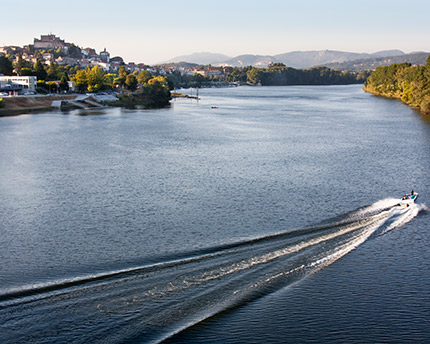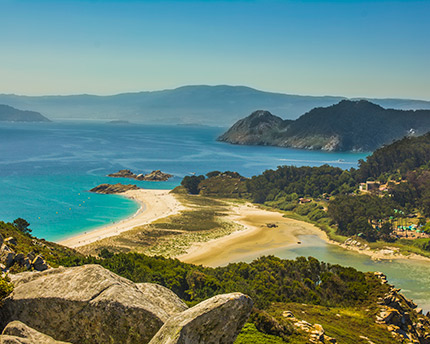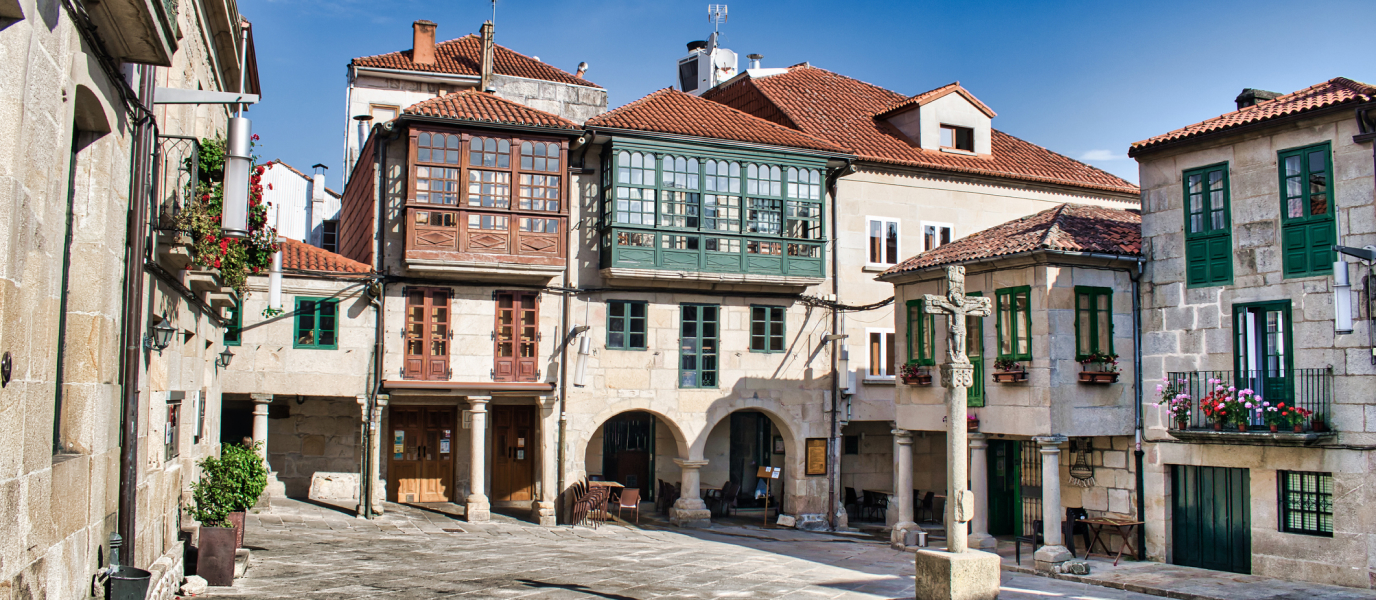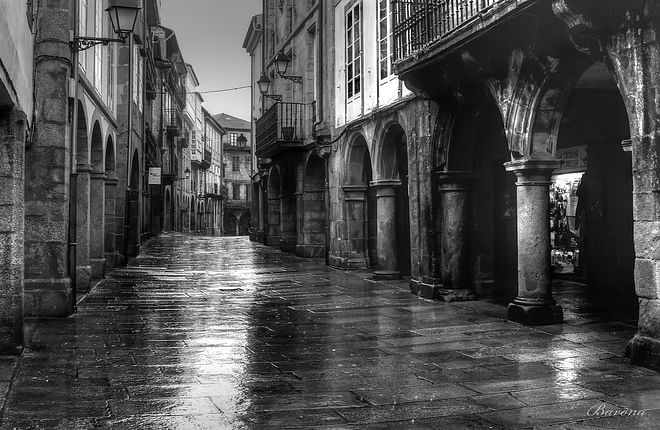Tui’s location on the border with Portugal has marked the essence of a town which dates back to prehistory. Its streets still have one of the main Jewish quarters in Galicia. In fact, the only establishment selling Jewish meat documented in Galicia was on Carnizaría street.
Tui maintains a structure that evokes the Middle Ages, the Way of Saint James, religious faith, commerce and the river, where the Miño has witnessed people crossing from one bank to the other over the centuries.
One example that highlights the importance of religion in Tui’s development is the Diocesan Museum, where the ‘sambenitos’ are kept, i.e. the special amulets that the Spanish Inquisition hung on heretics and which, in this Galician town, were displayed near the cathedral to remind everyone of the power of the Church. Now it is the only place in Spain where they are preserved and can be visited.
Poor Clares’ Convent
This cloistered monastery, known as Las Encerradas, has existed for more than 500 years from the time that a group of 10 women confined themselves in a beguinage to live their faith. The first building that the nuns occupied still stands in front of the convent.
It is a Baroque building and the bars that separated those women from the outside world, confining them to a religious life, are very striking.
Nevertheless, their soul travels throughout Tui since they are in charge of making the most famous dessert in the entire town: ‘pececitos de almendra’ (fish-shaped almond desserts).
Also famous is the vaulted passageway that connects the convent with the upper part of the town and its walls.
If you can, be near the convent on the hour, you will see how its bells continue to mark the lives of the citizens, remembering every moment of the day.
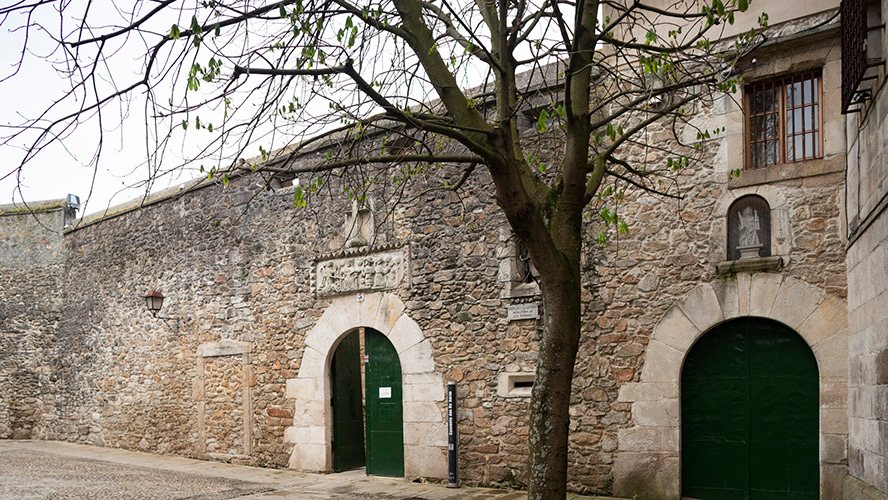
Tui Cathedral
The Cathedral of Saint Mary of the Assumption in Tui is a fortress that continually overlooks the river Miño. Before this Romanesque temple, there was a basilica during the reign of the Suevi.
The temple was constructed between the 12th and 13th centuries when the bishops wanted to build a place in Tui to defend their faith, hence its walls and crenellated towers. The first example of the Gothic style in the Iberian Peninsula can be seen on its western doorway.
The cathedral’s cloister is incredible, one of the oldest in Galicia, where a heraldic collection is kept that dates back to the Visigoths, and the garden is a spectacular balcony from which you can see the entire Miño. Next to this area is one of the oldest parts of the cathedral: the chapterhouse.
Two Baroque choirs, the Expectation altarpiece, the Chapel of Saint Elmo’s Relics and the Chapel of the Holy Sacrament are some of the treasures that this cathedral fortress preserves inside and which are well worth a visit.
In the Cathedral’s Diocesan Museum, you can see the only collection of ‘sambenitos’ that the Spanish Inquisition hung on the heretics of the period that has been preserved throughout Spain.
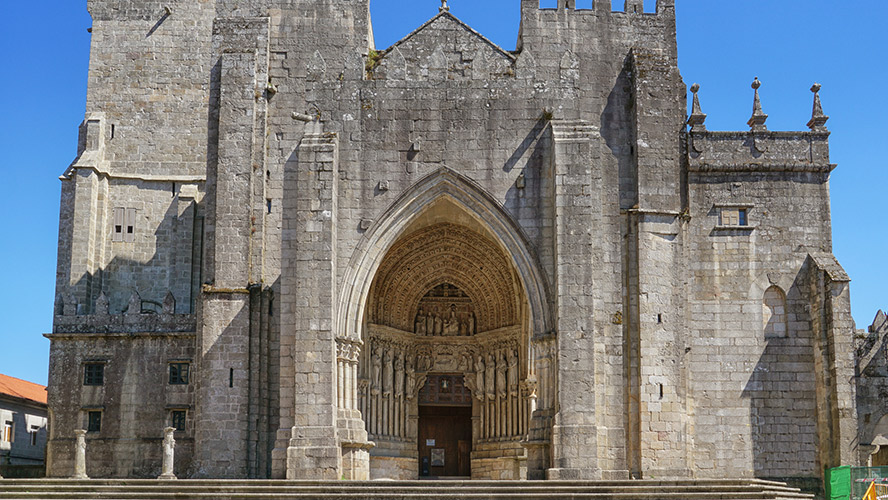
Saint Elmo’s Chapel
This chapel in honour of Saint Elmo, patron saint of Tui, was built on the floor of the house where the Dominican monk Saint Pedro González Telmo lived in the 13th century. Work continued until the beginning of the 19th century, but the temple is considered to be a jewel of the Portuguese Baroque that has its main communication route with the Galician side along the river Miño.
As soon as you enter, it is impossible not to fix your eyes on its gallon vault, but you should also look for the frescoes of the period.
The cathedral is easy to find since it is a meeting point for pilgrims who leave for Santiago de Compostela to follow the Portuguese Way, another holy route to gain the Jubilee indulgence.
Estrella Square
Plaza da Estrela (Estrella Square) is one of the most spectacular viewpoints over the river Miño and the border with Portugal. From there you will see the remains of the old wall that fortified the town during the wars against Portugal in the 17th and 18th centuries.
Curiously, you will also see the golden shells that mark the Way of Saint James in the surrounding streets: Tui is just 112 kilometres from Santiago de Compostela, which makes it the starting point for many pilgrims to see the tomb of the patron saint.
From that viewpoint, there are stairs that lead to the riverside path, which is the best way to explore the river’s importance for Tui and its vitality.
The riverside path
The river Miño has marked Tui’s existence since its origin and nowadays it has one of the most pleasant paths in the area, created in 1983, which reaches the international bridge that connects Tui and Valença, the Portuguese town on the other side of the river.
Many people walk or cycle along the bridge and change country in a couple of pedal strokes or a few steps.
The path has a cement part and a wooden section, forming a path of walkways next to the river which provides you with the best place to enjoy the intense life of a river that separates two cities and two countries linked by almost invisible threads.
One of the best times to walk along the riverside path is in the evening, especially when the sunset approaches since the sun’s colours are reflected in the water, creating a unique picture. There is a swing on a pergola in one of the entrances that is loved by viral photographers.
There is also a beach area, a playground and even the mouth of the river Tripes, a very interesting aquifer area to visit.
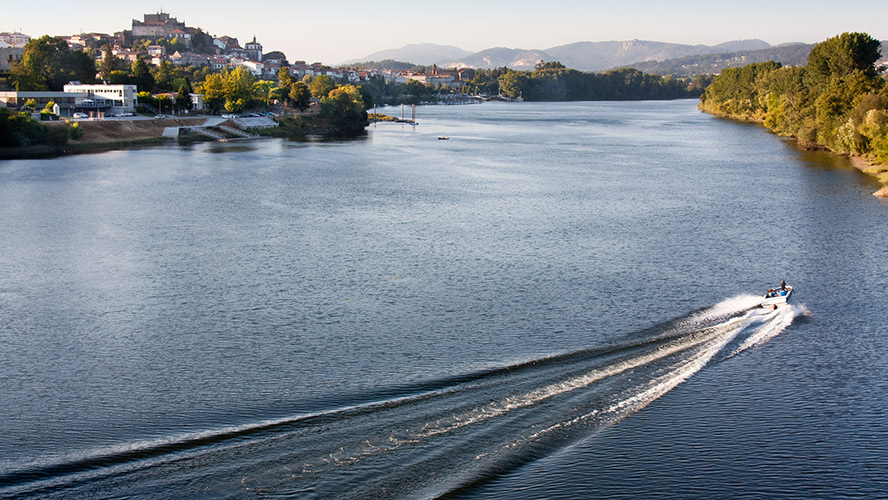
Where to eat in Tui
One of the pleasures that Tui offers is precisely eating, anywhere and at any time. If you want to enjoy a unique Galician corn pie, the best place is Tapas e Viños. You can also have a great meal at the El Molino Tui restaurant, with its delicious xoubiñas (small sardines), and at Taperia O Albergue, with a quite varied menu even on Saturdays.
Things to see nearby
A must-see while in Tui is Valença do Minho, four kilometres away, just on the other side of the river. It is a historical town, with a huge 5-kilometre wall and an old quarter that is very pleasant to stroll around.
Another plan is to visit the Santa Trega Mountain, which has incredible views over the mouth of the river Miño and one of the best preserved hillforts in Galicia. You can also drive to Baiona, one of the most beautiful ports in the area, with an incredible promenade where they say that it was the first place to receive news of the discovery of America. It is a great place for enjoying its beaches, its old quarter and its excellent food.

Where to stay in the province of Pontevedra
One of the best hotel options is the Occidental Vigo, located in the centre of Vigo. It has views of the Vigo estuary and is very close to the city’s shopping area.
It is a perfect place for travelling around the Pontevedra province since it is next to Vigo’s entrances and exits and also Urzáiz train station.
The 104 rooms provide comfort and all the services for those who want to enjoy Vigo’s great historical and cultural wealth.




































































